Shared Lines Putahitanga
SL:P
www.sharedlines.org.nz
Pūtahitanga draws on the surrealist tradition of ‘exquisite corpse’ where each artist contributes an element as part of a collaborative whole. Pūtahitanga is a word that can be translated to mean a confluence, junction, joining place, or convergence.
Beginning on 25 March, as the Alert Level was moved to Level 4, putting Aotearoa into a nationwide lockdown, Shared Lines concocted a plan to enable artistic collaboration throughout this time of uncertainty.
This project aims to strengthen connections between artists and communities through New Zealand’s regions and cities at a time when many are feeling isolated and livelihoods have been put under stress.
The following artwork was made by sixty artists based all over Aotearoa, from Kaipara to Ōtepoti (Dunedin), during August 2020. The contributing artists were given a standardised sheet of Fine art paper and coordinates within which they were given full agency to create.
To find out more information about the artworks, you can scroll down the page to find the artist’s name and a description about their contribution. You can also click on their work or name to be taken to their artist profile.
You can find out more information regarding Shared Lines: Pūtahitanga and Shared Lines Collaborative on our website.
Gerry Brownlee
The cynical, short sighted slime of a treacherous Tory crime. A tribute to lack of love and imagination. An opportunity lost to create a garden of Eden. A heavenly city lost and possibilities of what could have been.
This strident and optically buzzing colour combination creates a painted work that visually flows from left to right. My work celebrates playfulness, theatricalization, exaggeration and exuberance. I am exploring ideas of camouflage and mimicry through the blending and masking of forms, colour and pattern.
As a Korean immigrant, Min Her grew up with a mix of cultures and learned to grapple with different modes of communication. Her practice visually, and at times physically, engages textile sculptures that invite audiences to be enveloped into an installation. She does this by using the tactile and familiar nature of fabrics and costumes to draw in audiences to an unknown space. During her time Ilam School of Fine Arts, Her delved deeply into the historical traumas Korea has experienced in an effort to investigate the effects these events can have on a culture and its people.
This painting was made as a site of hope in this time. I believe connecting to nature is a way to connect to our own internal nature which, in conjunction with colour and expressive mark making can provide a space of relief for the viewer.
This work takes inspiration from the murmuration of starlings or bats. The lockdown for me was a similar experience, feeling like I was part of some larger and profound movement but also doubting how my small and insignificant coordinate could really make a difference. Our individual points never touching, trusting that each takes up their role to form the whole.
Through lockdown we committed to move spaciously in unison for a common goal. Be it on the footpath or at the supermarket, this act was a silent communication of care and respect for each other. This art work embodies visually the full power of
the collective, honouring the many coordinates that moved in unison.
enter text here
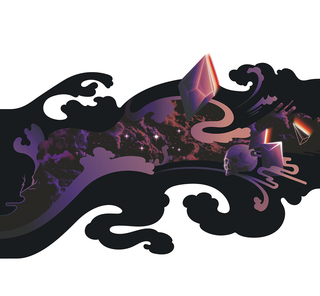
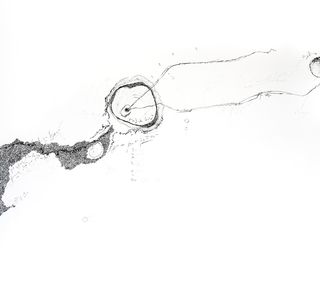
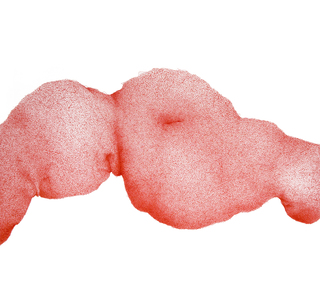
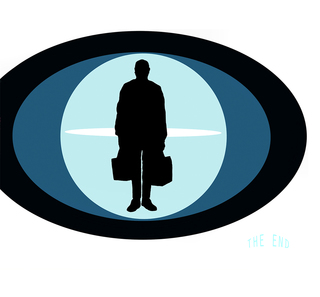
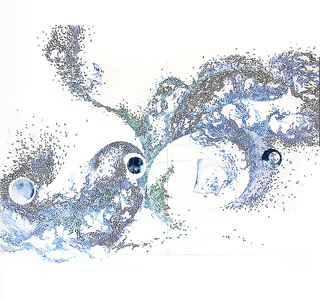
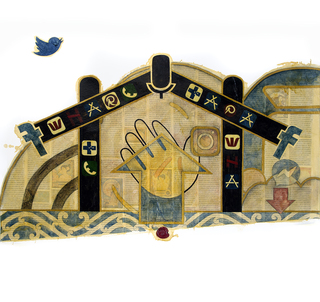
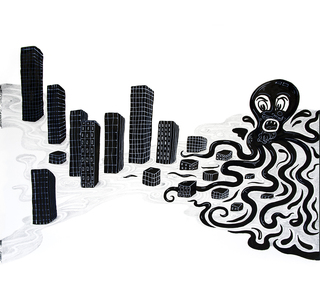
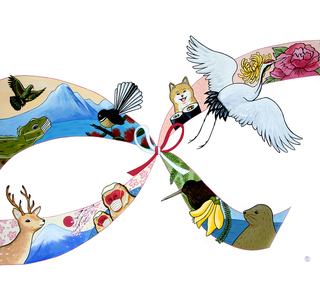
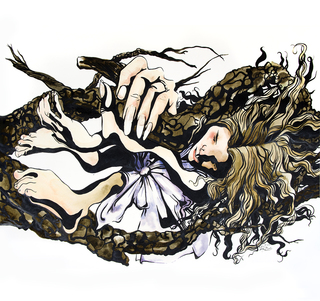
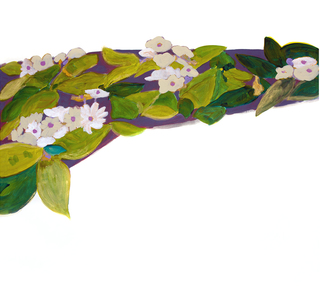
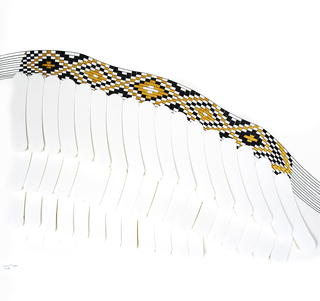
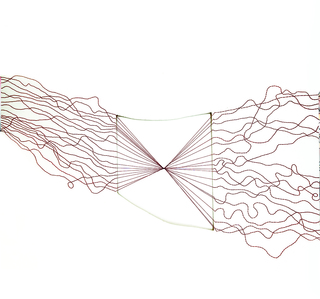
During our first lockdown Zoom and the quiz game of Kahoot was how our family coped and communicated. Combining the two apps and the message that Scientist predict that at the current rate of sea rising The Island of Tokelau will be under water in 50 yrs.
My homeland gone forever? is unbelievable to fathom but a reality - we especially as Tokelaun - need to grasp and highlight to the rest of the world to stop or at least slow down the process.
A campaign that does this well is called "350.org" 350 representing the safe level of Carbon dioxide in the atmosphere. We are currently measuring 400+
The inspiration for this artwork was the ancient Greek myth of Cassiopeia the Queen. I loved Greek mythology as a teenager being motivated to study it in high-school largely based on my fascination with the visual effects of Ray Harryhausen in the films Jason & The Argonauts (1963) & Clash of the Titans (1981). This fable seemed appropriately dark & melodramatic for me to create some ironically cheesy 70s style, LSD infused, van-art out of.
This work is reflective of the concepts of capturing / engulfing / absorbing / abducting. In part it considers the physiological aspects of the pandemic and also the psychological insularity created by social and media influences.
Part of my recent work has been in exploring communication particularly from the vantage point of reaching out or making contact from distant or obscured locations. I have also been looking at direction, orchestration and documentation under abstract circumstances. It considers communication and observations of communication where there is a disconnect through lack of common ‘language’ however one might interpret that concept.
In this work I tried to let go slightly of the idea of clear physical solidity; to engage in a flexible idea of objectness across the paper, rather than a figurative thing with understandable forms. I wanted to bring together an impossibility of surface, with only the simplest representation of the thing that exists. Like human relationships, I like to think of the work as both not-quite definable, and also reassuringly present.
Winston Churchill's statement, "Never waste a good crisis" reminds us that although the recovery of the COVID 19 crisis will not be easy, it can prove to be a gateway for change in our society and allow us to shape our new future, a rebirth.
With this in mind, Janneth Gil wants her work to get people thinking about moving towards pathways of renewal that ensure greater environmental sustainability.
Her work uses symbolism, photographs of a placenta resembling a tree of life, which represents rebirth and connection with all forms of creation. Image manipulation is utilized to create monoprints. They are reconstructed into abstract forms by painting them over with handmade inks created with found objects and organic elements.
Linocut and woodcut print with candle flame soot, oil stick and pencil
With needle and thread, the act of piercing the paper, threading the needle, tying the knot, making the stitch, was performed over and over to create a net-like pattern that meshed itself across the surface of the paper.
この水彩画のシリーズはこの3,4年私が夢中になっている手法です。眼を近づけてよく見てみると中にいろんな生き物や動きが見れるでしょう。さらによく見てみるとそれらはただの可能性でしかないこともわかります。人は物を見るとき最初にその人が見たい物を見る傾向があります。なので私はこのシリーズにタイトルをつけないでいます。変わりゆく雲を眺めるように自由を楽しんで頂けたら幸いです。このデジタルイメージではよく表されていないのが残念ですが、薄くて消えそうな色でできています。" - 吉川基子
"For the past 3~4 years, I am obsessed with using this technique to do watercolour drawing. If you look at the drawing closely you could see some creatures or something and if you focus on them for some time you would realise it's all just possibility. People see what they want to see in it. That's why I don't give titles to them. Like looking at clouds which keep changing their shapes, if you enjoy your freedom I'm happy. This digital image is not showing my subtle colour and sensibility but it's ok."
Blue Pureti (blue plate) Domestic chaos and balancing acts.
During lockdown Robert was confined to his home with meal drop offs and a couple of visits from district nurses being the only interactions he would have, his normal support staff weren't allowed in his house. He became very lonely and quite bored and was stuck with the few resources he had at home to draw with. Holly has been working with Robert for 11 years and when she found out how life was for him at that time she dropped some art supplies and resource books off to him to help pass the time.
Part of Robert's uniqueness are his hands, his fingers are fused together so he has limited use of them. Under Robert's direction, Holly completes tasks that he is unable to do, such as peeling double sided tape to stick his collages together. Robert and Holly felt that Shared Lines: Pūtahitanga was an excellent chance to illustrate an important part of their lives that was missing over that time. They also jumped at the chance to integrate an artist with a disability into the mainstream, neatly side-stepping the "outsider artist" label that Holly firmly believes is redundant in today's art world.
This shows how we could see Covid 19 as a DNA mutating Monster. Humanoid figures more interested in listening to false information which is broadcasted by the Economy based Sentinel Money Towers. Beware the rabbit holes.
I can hear you, on the wind, telling tall tales - is a reflection of the sounds during the Covid-19 lockdown period over April and May 2020.
Music could be heard drifting in and out of audible range. With the absence of motor vehicles, over the Lockdown period, the sounds of the natural environment were accentuated and not muffled or muted by traffic.
Perhaps these sounds allowed contact between individuals and groups that were restricted to isolating in their small ‘Bubbles’ at the time. We all heard the same sounds that seemed brighter and more mellifluous than normal.
The birds too, sang their songs louder and clearer, in the carless city, over the lockdown period. Were they celebrating the new sense of peace and quiet in their environment or did we just start noticing them now that we had the time and awareness of our place? I could hear them, telling tall tales.
During a bleak period I wanted to espouse joy, hope and fun.
Setting aside megaphones, religious beliefs, personal interests, cultures and all forms of clothing for the greater good; our team managed to flatten the curve.
I saw New Zealand as a great voyager ship being steered expertly through dangerous waters.
This work investigates the concepts of identity and interconnection. Through the repetition of the heads which interlock and share eyes and ancient alchemy symbols, I'm exploring how our shared experience connects us all.
Each head has both masculine and feminine aspects within (upper and lower lips), as we all have the hormones of testosterone and estrogen within us. The third eye eludes to an inner wisdom that through the ages has been documented humans do have and can reach.
Using a symmetrical layout, I also touch on the universal idea of beauty and by viewing this artwork upside down, the image is the same.
Visual Vitamins provides a visual immune boost for viewers in this time of COVID. A celebration of physical presence, 'VV' is a tactile adventure playground for the eyes, a haptic garden of textures, an exercise park for eye health.
During COVID-19 physical contact has been heavily restricted. It has foregrounded how hard it is to fully replicate face-to-face experience and how important that contact is in maintaining health and a coherent sense of reality. Reaching out via screens for contact with friends, family and work, is a welcome reprieve and a convenient substitute. But even though our minds readily accept the digital screen’s warm, glowing, flattened space, extended periods of screen-time exposes us to risk of physical side-effects. 'VV' provides an antidote via Web MD’s advice to spend time perceiving real-world, three dimensional depth, volume and distance.
Our chains of connection are fragile. Population density makes our species vulnerable to infections but our ancient biology depends on physical and emotional connections with other humans for good mental health. Chains speak of the deep connection we have with the natural world, and this is the lifeline we must grasp to bring about change.
With the non-specificity of asemic writing there comes a vacuum of meaning, which is left for the reader to fill in and interpret. For me, that’s turning the negative space between the pattern into the design element & it’s also filling the void of my own lack of cultural connection into something deeper.
The painting invites the viewer to find peace and a sense of order in the completed work, a place of comfort amongst the chaos of things outside of our control.
Kia ora Rā ! My drawing shows a snap-shot of where I was at, at the point of the drawing deadline. My initial ideas re: rāhui/lockdown got morphed into documentation of where some lives are at in spite of the pandemic. Life/crisis/mental health/addictions/family pain flows on regardless.
Covid can't stop the lessons of the genes. Strength multiplies, divides, grows, like splintered daffodils. The strong birds call us to keep going. My Aunty called herself a "tuff bird". I prayed to the dead birds too, as I dug for gold in my experience. Even praying/karakia is something to be staunchly held. Thank you Shared Lines / Pūtahitanga for the opportunity to be part of the 'Exquisite river body'. Peace.
Everyone keeps suggesting you stop - and focus on the breath.
What's your current flavour?
Ever exhale after consuming too much?
...or vomit, just a little?
Mā fox still lavas you.
This work is the continuing investigation of art materials and popular culture iconography.
There is something inherently generous and open handed about the process of making art for Shared Lines. This time around due to the fact my work is literally one part of a greater whole it spoke more than ever to me about sharing the lines of art making with others. How this collaborative approach can help to grow and strengthen our communities and ourselves.
Making this work came at the return of lockdown #2 for me in Tamaki Makaurau. The parameters of my coordinates were welcomed as was the space and time to make this work.
For many of us lockdown was a time of reflection and introspection; a time for quiet and to look inwards. I treasured the time I had and used it to re-connect with myself while being disconnected from others. Due to lockdown restrictions the ability to ‘make do’ came to the fore and I discovered new ways to produce work with what was at hand.
This work was informed by poems printed on baking paper and lists I made during lockdown. During that quiet time, I found I was more aware of my surroundings and what I share my space with. My table is a dumping ground and although it is a mess it is also a snapshot of my days. I made a list of what was on my table then expanded to take in what else was in the room.
My interest in the use of everyday materials for art making prompted my choice of painters masking tape for this work. Following the Kaikōura earthquake in 2016, I used masking tape, along with other materials associated with the rebuild, in a more representational way – to depict the damage to the land and the rebuild of the state highway. Nearly 4 years later, the rebuild is almost complete. I am still using tape in my artwork, but no longer as a response to the earthquake. I now find the repetitive action of tearing and applying tape to paper allows me time for quiet contemplation.
The coordinates I was given immediately made me think of being pulled or reaching out in both directions and it was only much later that it occurred to me I hadn’t considered the image as a flow from left to right or vice versa.
I’ve been working with the image of the skull as a memento mori for several months now and wanted to see if I could think of some way that could work with the coordinates. Because I’d initially conceived of reaching out or being pulled out from both left and right sides, I thought of two skulls rather than one. The coordinates and other constraints such as limits at the edges of the paper, dictated that one skull be larger and one smaller. They’re in a tight confined space with each other but at the same time they’re being pulled from their respective coordinates. Light surrounds them from all sides.
The Covid experience is throwing up some interesting alterations in our perceptions of closeness and distance - while being physically close may not be possible, particularly with those in other countries, these restrictions can enhance local and community networks and create new links through shared experiences.
In the enforced stasis, we explore the geography of memory within the watery stillness of a silenced port. Each twisting line unravels the experience of being both stranded and liberated on the tidal edge of Covid 19.
'The Best of Both Worlds' is a gouache on paper work that shows the flora and fauna of New Zealand and Japan intertwining and meeting in the middle.
The hana musubi (flower knot) in the middle symbolises our strong bonds and connections between both nations and how that relationship shall continue on into the future. It is also a visual representation of my upbringing in both countries.
'Blocking out evil' pays homage to the carvings at Toshogu Shrine, a pictorial maxim of the proverb, "see no evil, hear no evil, speak no evil.” It's a playful reference to the power of resilience, especially in the midst of a global pandemic where conspiracy theories abound.
This artwork is a reflection on images and concepts found throughout the Asia Pacific region. Origin narratives from these regions speak of the nature of humanity as one with the natural environment, as having a spiritual and physical reality, characterised by evolution and tied together by loving relationships.
The positive and negative spaces in this work reflect this dual reality of spirit and body. The images are connected and shaped by each other, conveying how humanity is organic with the environment, shaping and moulding each other, and how we cannot segregate the human heart from its environment.
With the present global pandemic affecting all of humanity, our inseparable connection, our need to help each other across countries, and to position ourselves next to each other in ways that will create harmonious beauty, patterns, and balance is ever more apparent.
This is a result of recent experimentation in my collage practice. For sometime, I have been using strips of images, laying them 'flat'. I have tried to evoke a sense of depth and movement on the work's surface; a 'flow' from coordinates on the left to coordinates on the right, or vice versa. I decided to incorporate the printed words that are associated with these images in the books that they are from, detail from the reverse.
The title of the work (Country, Snakes) was inspired by a Burroughs-type cutup process with the words that I typically keep as notes and poems when I make a collage.
These little boat-shaped leaves hold a multiplicity of meanings. I’m interested in the transmission of ideas, the management of spread, and the responses to COVID 19 that have brought us together.
There is an exploration of change here, and the controlled movement of people, goods, and ideas. Their individuality is visible but the image is hinged on the coherence of pattern.
There is a slow measured, repetition that looks loose but is based on mathematical plotting of virus transmission and alteration through population.
The piece has a baseline of pencil markings that each measure 1/8'' of an inch. Imperial measurement is based on the human body - an inch is the width of a thumb, a foot the length of a foot.
The kākahu metaphorically represents Aotearoa working collectively to control the spread of covid 19. Plastic tags form the body of the cloak and represent the digital age, which saw many of our nation move from working face to face, into remote engagement through digital forms of technologies.
The layers of each row and tāniko move rhythmically as the nation and its people continue to adapt and change to control the pandemic.
I have adapted a technique previously used on fabric works - processing and refining earth pigments for use on paper. Mapping the Kaipara River’s distinctive winding course to harbour, using mud from its banks.
The piece is influenced by my long running interest in the wellbeing of my local river. Cultural, industrial and pastoral influences over the past 150 years have taken a toll on the landscape of the Kaipara area - and this is nowhere more evident than in the sediment filled river. Foreign organic matter in the mud has given the pigment its distinct green-brown appearance.
During lockdown I spent a lot of time by the river, appreciating its impersonal, relentless flow and accompanying ecosystem during crisis. The final shape is interpreted from vintage aerial maps and photographs of the Kaipara River, and pays homage to its many twists and turns.
Pūtahitanga, Kāpiti
Part of Te Araroa – The Long Pathway.
I thought a lot about the many layers of history that make up a landscape when I created this work.
People too have many layers and complexities to their histories and their stories, and for some there have been recent unsettling changes in their lives. I wonder whether partly it is the consistency of the landscape that attracts us to being outside. By this I mean that it is steady and it is always there - although weather events might change it a little - the river flows more widely now, or takes a bit of a different turn, but it is always there. The mountain is there always in eyesight, though some days the clouds obscure it.
There is a reason we choose usually to holiday or take time out in a place where we can be outside most of the time. It is this connection to the earth that we need.
Work in isolation.
I don't have a problem with isolation or social distancing. If being isolated is the way of fighting back this pandemic, I'm willing to take it.
I'm more concerned with those who fight this battle everyday for themselves and others, those who lost their family and hopes or jobs or business, etc . It really is overwhelming!
A drawing made by smoke traveling through a clay vessel.
As we were distanced people became closer than ever...I believe that Covid has connected people in a deeply emotional and digital way.
People were looking into the way they were living their lives, their wants, needs and the people that mattered most to them.
This has opened up minds and opportunities to work together towards a more digital and more home based world where people have the time to care for their own wellbeing whilst being more productive from home. Creativity flared at the same rate as Netflix logins...artists were working prolifically and were sharing their experiences online.
This work illustrates 'Te whare tapa whā' the Māori wellbeing model through the apps I have on my iphone. This represents how I focused on my own wellbeing during lockdown...with a focus on staying connected with friends and family using the 'Houseparty' app.
Considering communication during lockdown I realise how highly I regard creative offerings. Like a handmade card, a thank you note, a posy of congratulations. Small ways to communicate connection. In lockdown this didn’t seem possible, the traces of touch too close to breaking the bubble.
As the lockdown eased I returned to my part-time floristry job. Near and far, we communicated love, loss, comfort, joy and congratulations through flowers. I was calmed by nature and the seasons marching on despite the state of turmoil. We were still not allowed in each others’ bubbles, yet I was off delivering bouquets. Bunches carefully placed in a tray by a florist who then backed away 2 metres, I advanced, picked them up, loaded them for delivery, placed them on a doorstep, knocked and backed away. A blossom or bud coming into our homes to communicate feeling where friends and family couldn’t.
This work is inspired by the arrival of spring and the Japanese tradition of Hanami - flower viewing. The fleeting beauty of spring blooms are a reminder of transience and change. This artwork was made by nature printing, using direct prints from plants and flowers to build an image. I like to think of nature printing as a conversation with nature where the plants are doing most of the talking.
In this artwork I nature printed flowers and plants from my garden and neighbourhood including blossoms, erlicheer, jasmine, wild strawberry, lavender, geraniums, viburnum and corokia. During a time of difficulty and uncertainty this artwork is intended to be a gentle celebration of the return of spring.
The mountain I live on is called Matairangi — a.k.a. Mt Vic. It’s on the edge of central Te Whanganui-a-Tara/Wellington. I've been spending time walking though the different types of ngahere that cover parts of the mountain. I’ve been climbing in the branches of the rākau, and as I look closer and closer at the soil and plants, I ask myself: am I like the native or exotic plants here? Am I like the rubbish or the rocks?
In this drawing, I scaled and warped the perspectives of my body (like a homunculus) to make it look like the way that it feels to be in my body, and to be immersed in the ecology of Matairangi. As a trans-feminine queer person, depicting my own body this way makes me more aware of how I disrupt gender normality on a human-inhabited Matairangi. It helps me to imagine how many other queer lives are embedded in this landscape’s history, and all the other places we live.
This abstract, watercolour painting I made for Pūtahitanga, is inspired by our braided rivers of Canterbury, Aotearoa.
Our very tangled social and biological networks form the foundation of my work, which pulls together themes of interconnection and impacts in the context of a planet mid pandemic. I wanted to tell a story of interdependency, intertwined fates and the idea of a new life-affirming distance.
Imagery of the familiar is morphed and blurred into intertwined forms which deviate from established culture/nature divides. What could at first be considered separate issues, healthcare and insect populations are linked by our pervasive concerns with productivity and human exceptionalism. Both networks are adversely impacted by this paradigm; our healthcare and disability infrastructures are undervalued and under resourced, insect populations globally are in decline due to hypercapitalist mandates. Conversely, both worlds are key to this planet's survivability (for many species, including us).
For this work, I explored ideas around Biophilia, the hypothesis that humans are innately attracted to nature, an unseen instinct and considered how people have reconnected with the natural environment through periods of lockdown around the globe and whether this will change future human behaviour toward it?
The concept that under the same sky, we are all connected, wherever we are. This work combines spontaneous and expressive print, collage and drawing with more considered reworking informed by colours and forms in nature. Capturing the spaces in between with woven elements providing an interpretation of connection, which is linear and at the same time broken or disrupted.
‘accustomed red’ is a flashback and a deliberation.
Lockdown was stress, sleep, and small spaces. Domestic claustrophobia seeped into our dreams and memories, rendering them absurd and vivid. Our brains were searching for context, and synthesising in its absence.
For those living in un-ideal housing situations, and for those who were vulnerable or isolated in their home environment, such experiences may have been even more clashing and filmic. Trauma, danger and the echoes of ugly nostalgia reduced the home/world boundary to a pinprick.
I drew on cinematographic influences to create a digital work which freezes my reality. As part of this exquisite corpse for Shared Lines: Pūtahitanga, I contribute to an audit of our collective experience: inventing resilience during l[anguish]ing days.
‘accustomed red’ dismantles; ‘accustomed red’ survives.

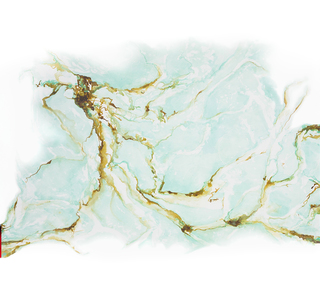
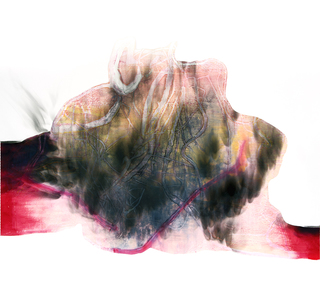
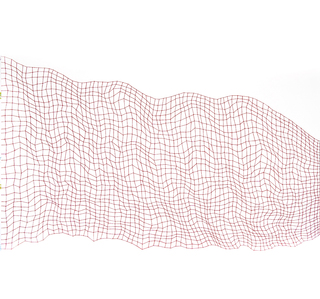
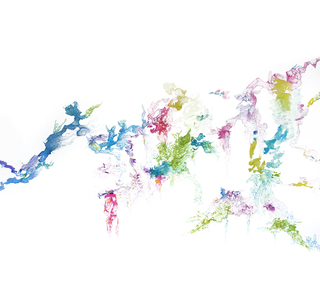
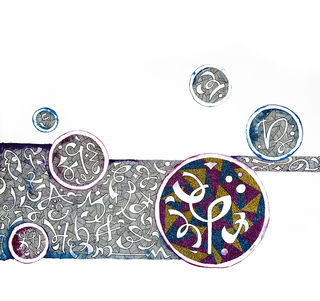
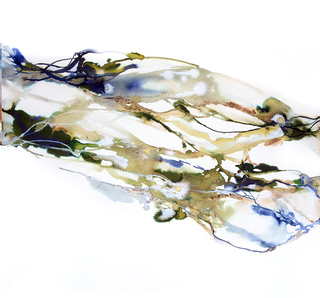
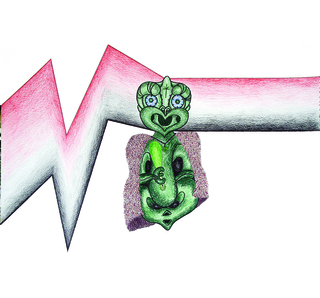
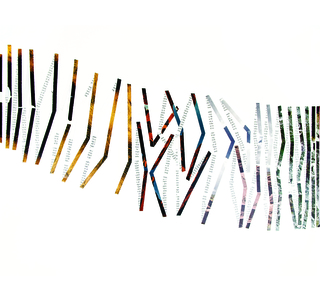
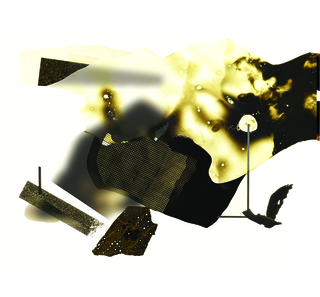
Doc Ross
Clara Wells
Lucy Matthews
Aaron Hogg
Stephen Templer
Mandy Cherry Joass
Motoko Kikkawa
Katherine Claypole
Fiona van Oyen
Sam Dollimore
Janneth Gil
Martin Paris
Jenna Ingram
Robert Jones and Holly Aitchison
Tobias Gilsenan
Hamish Allan
Tracey-Lea Morgan
Janna van Hasselt
Katie Hallam
Kate Lepper
Bek Coogan
Gaby Montejo
Matthew Ward
Gemma Syme
Mark Soltero
Tracey Osborne
Adrienne Millwood
Ngaroma Riley
Celia Walker
Vicki Smith
Christine Taylor
Tessa Ma'auga
Hannah-Rose Arnold
Van Luong
Negin Dastgheib
Camus Wyatt
Adele Dubarry
Kate Buckley
Celeste Sterling
Kyla Cresswell
Louie Zalk-Neale
L Hinds
Rebecca Smallbridge
Hannah Phillips
Della Rees
Sandy Rodgers
Dave Marshall
Tracey Morgan
Amy Couling
2
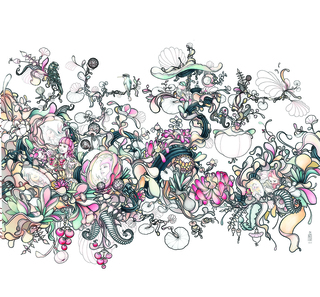

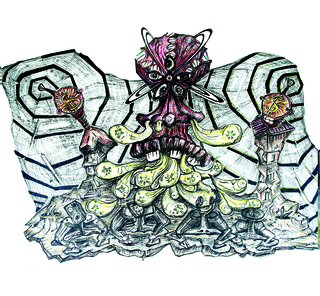

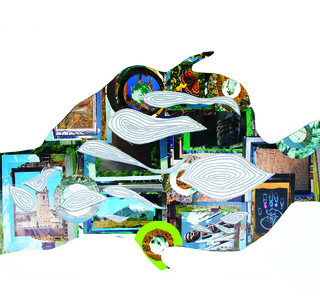
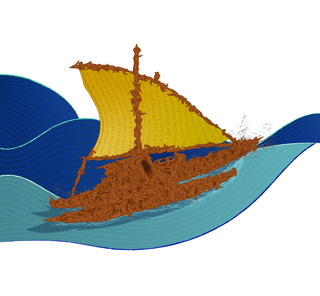
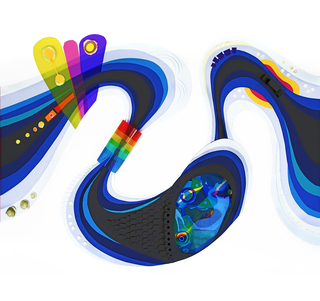
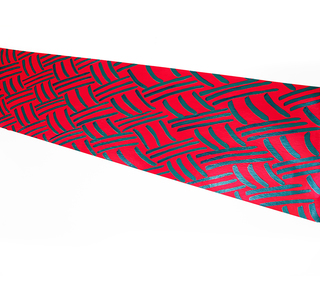
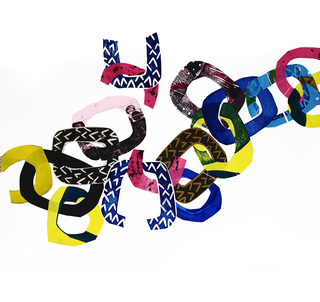
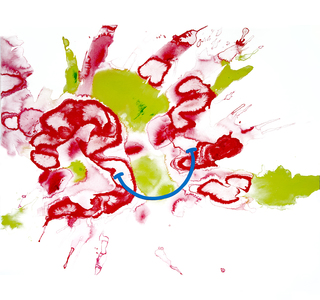
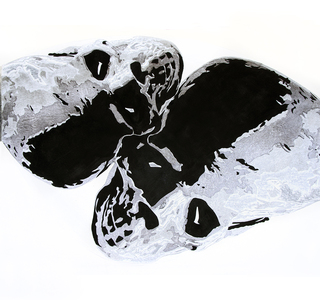
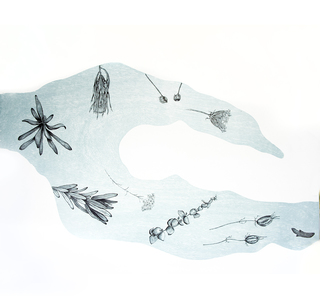
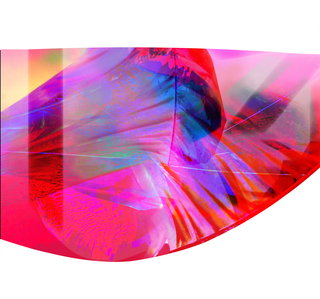
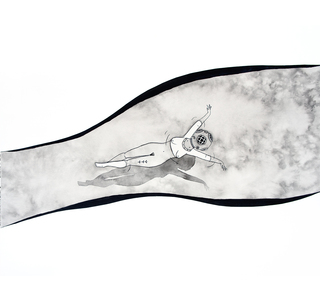
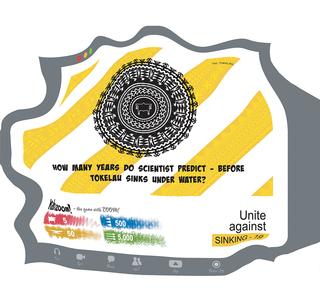
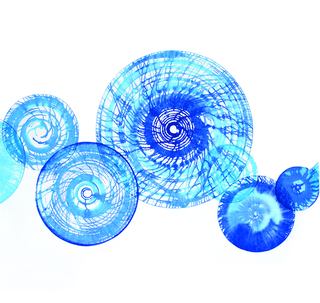

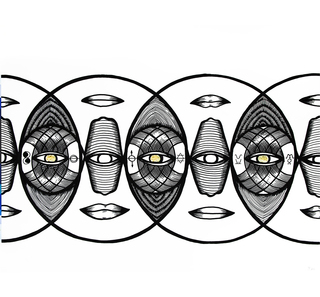
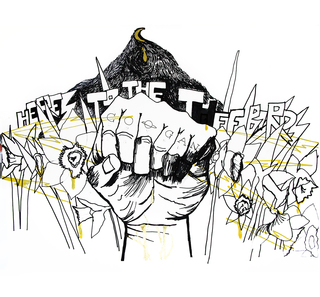
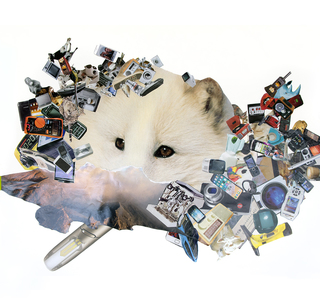
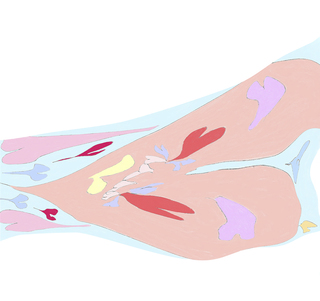
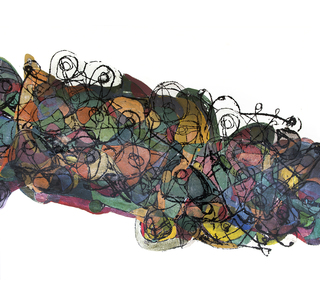
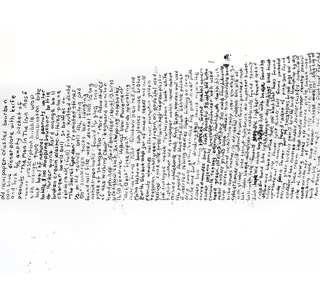
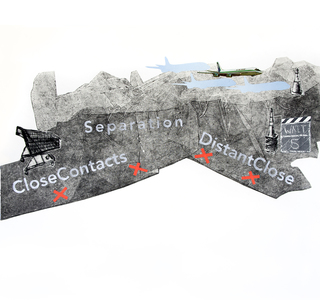
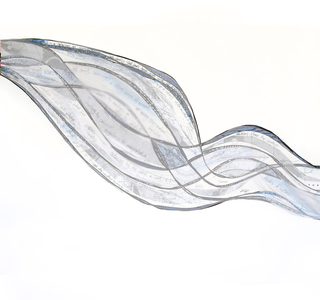
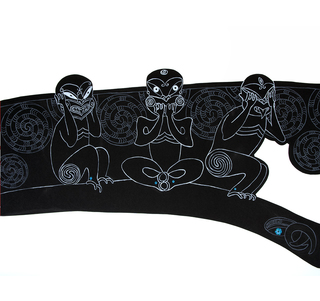
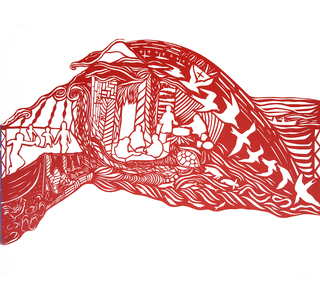
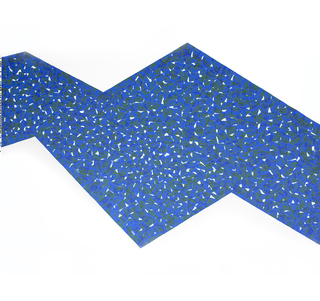
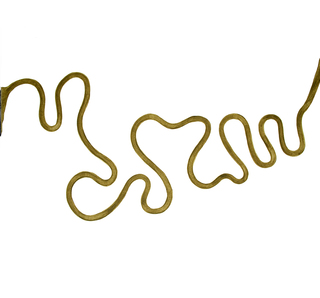
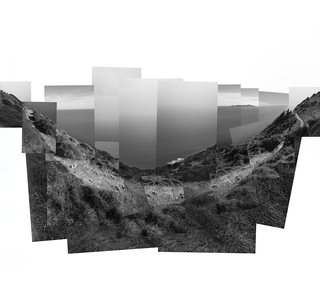
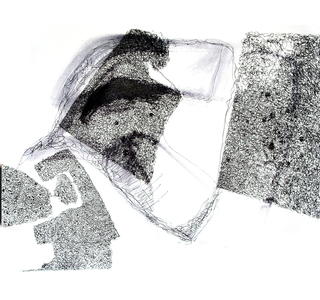
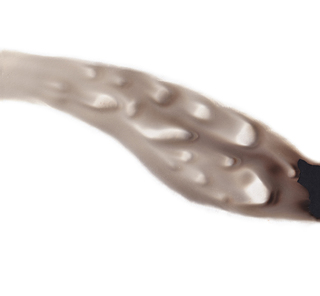
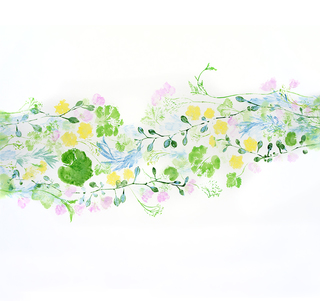
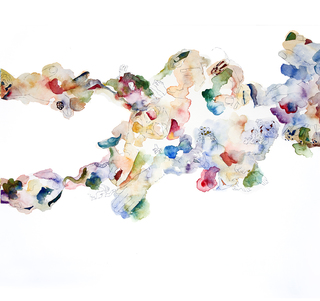
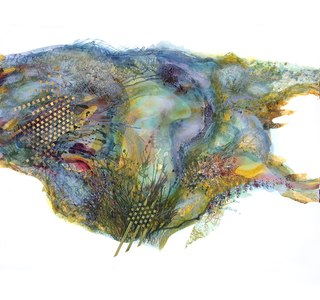
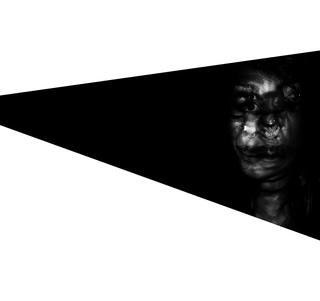
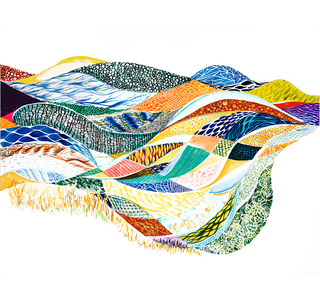
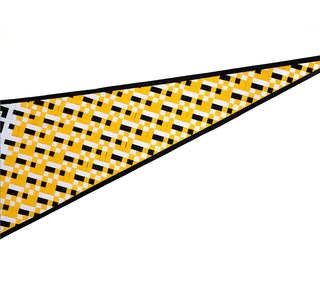
Welcome to the online exhibition of Shared Lines: Pūtahitanga
With special thanks to:
Doc Ross, Mark Amery, Shea McKenzie, Poppy Serano, Lawrence Wharerau, Matt Moriarty and Kim Lowe.


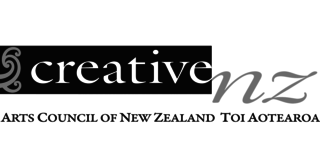
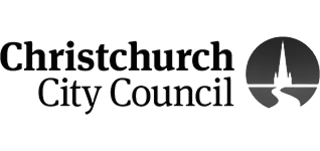
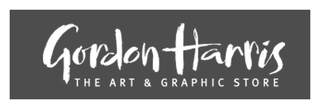

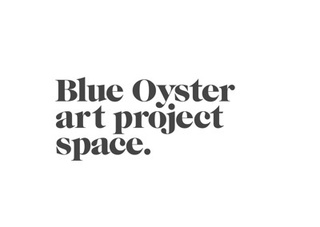




Lockdown was an enlightening yet confronting time. The first week was overwhelming; but very quickly, it became apparent that this time was allowing for a shift in priority. Blocking out the noise, the obligations, the busy body and mind, the structure like a ball and chain...Suddenly, there was space to communicate within.
Pōkerekere, meaning the dark, threatening of clouds, reflects the journey of disharmony to harmony that allows us to communicate from a space of tau; diluting the external noise and clutter to reharmonise and create with more clarity. Our tūpuna recognised the importance of slowing down, that to find that balance and harmony within is to allow for creative expansion. In the space of forced change - communication, collaboration and creativity were reshaped. Just like dark clouds that pass, the light follows.
This piece is a medley of observations. Sections flowing past, across and around each other. Studies of water as it flowed past, carving out paths of shifting undulating patterns, overlapping over time. Textures of light dancing through water and reflections of the landscape.
The shades and hues reflect the changing light of the landscape, skyscape, and materials lit up under the water during the hours of afternoon and late evening.
120,869 were killed in my country by Covid-19.
Those infected already exceed 4 millions.
I don't need to wear masks, but I can't breathe.
During the day, the weighty body moves without grace, being pushed by daily tasks. In Brazil, my family and friends have been inside their homes for over 100 days. Sleepless, I wander along the banks of the river that flows in me, every night.
As if in a ritual, I bathe in these waters and let them wash me.
I let them take me.
I surrender to the force of the current because the only thing I have left is my intuition. Only with my eyes closed can I see the future.
My art is a silent scream.
Often used to refer to how raising children requires community responsibility, a network of support and trust of one’s network, IT TAKES A VILLAGE can equally be applied to our community effort to eliminate Covid-19.
The visual language of simple marks is born out of seeking to see the world through a baby’s eyes, seeing the world in patterns; the many squares representing life on repeat, the blur of early motherhood and lockdown, one day blending into the next; the notion of productivity being achieved in small blocks, the sum of which can create something meaningful. Using the street view of Kaharore (Karori) as a base, the squares become little houses, close but separate, a community of bubbles forming a whole. The architectural aesthetic suggestive of a plan for co-operation: as a community we each play a small but vital role and our willingness to work together flows through.
Every culture uses weaving for necessity. For clothing, shelter, to catch food, eat food from, to tell stories. Covid-19 is a story being told in the media everyday around the world. Now it is woven into our lives.
Yellow, black and white, the colours associated with official Covid-19 information. Through Shared Lines: Pūtahitanga, the history of weaving can live on as a global method for story telling. This pattern, niho taniwha, symbolises whanau and a chief’s lineage from the Gods.
Images on Social Media with a person locked into a small space, with no windows, sitting all day, operating every task over a screen from socialising, working or buying groceries are trying to foster the fear about technology. But thanks to the internet I can live close to the ocean in the New Zealand bush surrounded by nature and bird songs. I can connect with my friends all over the world, I can work from home. Sometimes I choose to spend the day outside, in the garden or to go for a walk to the beach. At night time I start to work.
Since lockdown, I put even more effort into staying in touch with friends from all over the world. My experience is that it enables me to live a healthy lifestyle, to be more in nature than ever. In my art piece, I want to create a positive image of how technology influences our lives while staying in our bubbles and being surrounded by beauty.
The work has been created on a light box using fluid acrylic paint, celophane and masking film. It has then been photographed, digitised and composed in layers in Adobe Photoshop to create the finished composition.
Whakahā
This picture depicts the memory of Tohunga expelling breath into others, to transfer Mauri.
It is the inflowing, and the outflowing.
Turbulence and Calm.
Travelling through the Mind.
Arpége Taratoa
Helen Oishi
Robbi Carvalho
Debbie Fish
Anna Hayes
Moses Viliamu
Denise Fort
Min Her
Karaitiana Akroyd
Jason Ware
Matt Moriarty

Shared Lines Collaborative would like to thank the following for their sponsorship and support:
JavaScript is turned off.
Please enable JavaScript to view this site properly.